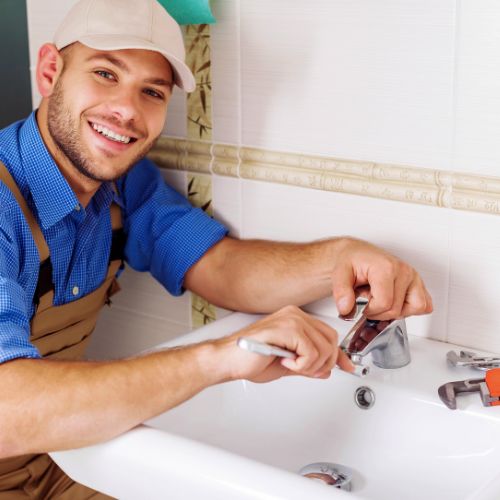How to Install a New Faucet – It can be a difficult task
by siteadmin

A plumbing system is a system of pipes that brings fresh water into buildings, and drains the wastewater. They can be found in offices, homes, and factories.
Write a short, clear guide to help readers understand the steps. Visual representations and examples are helpful for comprehension.
Drainage of the Pipes
Most homes take water pipes for granted. They are located in the kitchen sinks, toilets, and showers. They carry water throughout your home.
If the pipes are not properly drain, they could freeze when temperatures drop below freezing. This could lead to plumbing problems. As it freezes, the liquid expands and can cause pressure which can lead to bursting or leaks.
Before you make any plumbing changes in your home, drain the pipes. This will save you a lot of time and prevent any damage.
Although draining pipes isn't a part of every residential plumbing job, it's an important step to take before any problems occur. You'll be ready for any plumbing emergencies or problems and can schedule drain maintenance later if needed.
Installation of a Faucet
A new faucet can make a huge difference in the appearance of your kitchen or bathroom's plumbing. It can be hard to choose the right one.
First, consider the type of sink that you have. There are three options: single, double, and triple-hole.
There are many finishes you can choose from. For example, chrome can be as low as $40 and top-of the-line finishes can cost up to $1,200.
After you have chosen a faucet, connect it to the water supply line underneath the sink. This is possible because some faucets come with flexible piping already attached.
These are not required for faucets. You will need to attach flexible supply cables to the faucet and connect them to the hot and cold water valves under the sink. Before connecting the valves, wrap them with Teflon plumber’s tape. This will seal them and prevent any leaks.
Installation of a toilet
Installing a toilet can be daunting for a beginner. This requires knowledge of plumbing principles and the use of the right tools to ensure the job is done correctly.
First, remove the old toilet. This will stop sewer gas entering the bathroom and prevent odors from filling it.
Next, you will need to use a putty knives to remove the old wax ring (the hole under the toilet) from the floor floor flange. This is best done slowly and thoroughly.
After the flange has been removed, place the new toilet bowl on the flange. Then, lower it into position. It is important to align your bowl's base with the bolts on the flange.
Next, attach a washer to each closet bolt and tighten by hand. You want the nut to be tight, but not too tight. This could cause cracking in the porcelain bowl.
How to Install a Shower
It doesn't matter if you have an old bathtub, tub/shower surround or alcove that you need to renovate, or if you are building a new house, installing a shower is an easy project for DIY homeowners. It is easy to install a shower panel, especially if you have prefabricated panels with flat edges known as flanges. These can be attached to the wall studs.
Before you start putting in the base for the shower, make sure to square up the walls and use a level. You will need to take out any framing studs that are causing uneven or lean walls and replace them with newer ones.
After the walls have been leveled and straightened, place the shower base in a corner of your room to make sure it is vertically and horizontally plumb. To lift the base slightly if the bubble is not in the center line, place wood shims underneath.
Next, attach the shower base to the bolts at 6 inches intervals or more using screws. This will allow the flanges to sit flush against the studs, and secure the pan.
7004 Colonial CT, North Wales, PA 19454
A plumbing system is a system of pipes that brings fresh water into buildings, and drains the wastewater. They can be found in offices, homes, and factories. Write a short, clear guide to help readers understand the steps. Visual representations and examples are helpful for comprehension. Drainage of the Pipes Most homes take water pipes…
Recent Posts
- EmPartners Elevates Life Sciences Consulting with Innovative Services
- Harnessing the Power of Traditional Chinese Medicine Techniques for Pain Treatment
- Dos Reyes PGH: Elevating Catering in Pittsburgh, PA
- Prettyman Pressure Washing & Painting Revitalizes West Chester with Top-Notch Services
- Top Notch Roofing/Siding: The Best Roofing Contractor in Absecon, Egg Harbor Township, NJ
